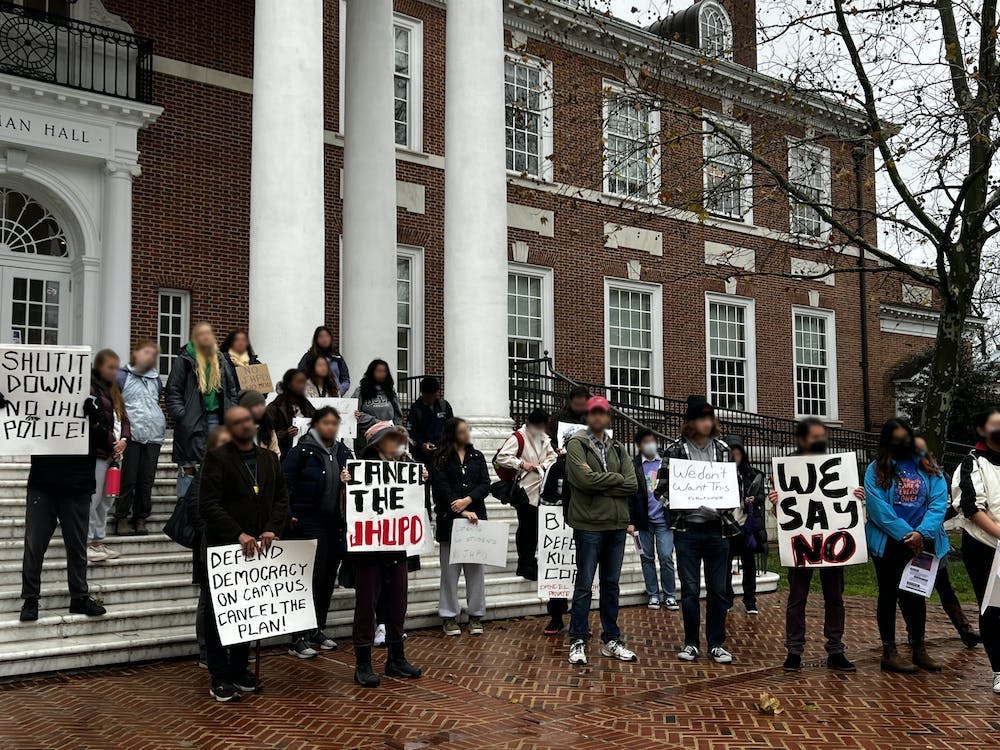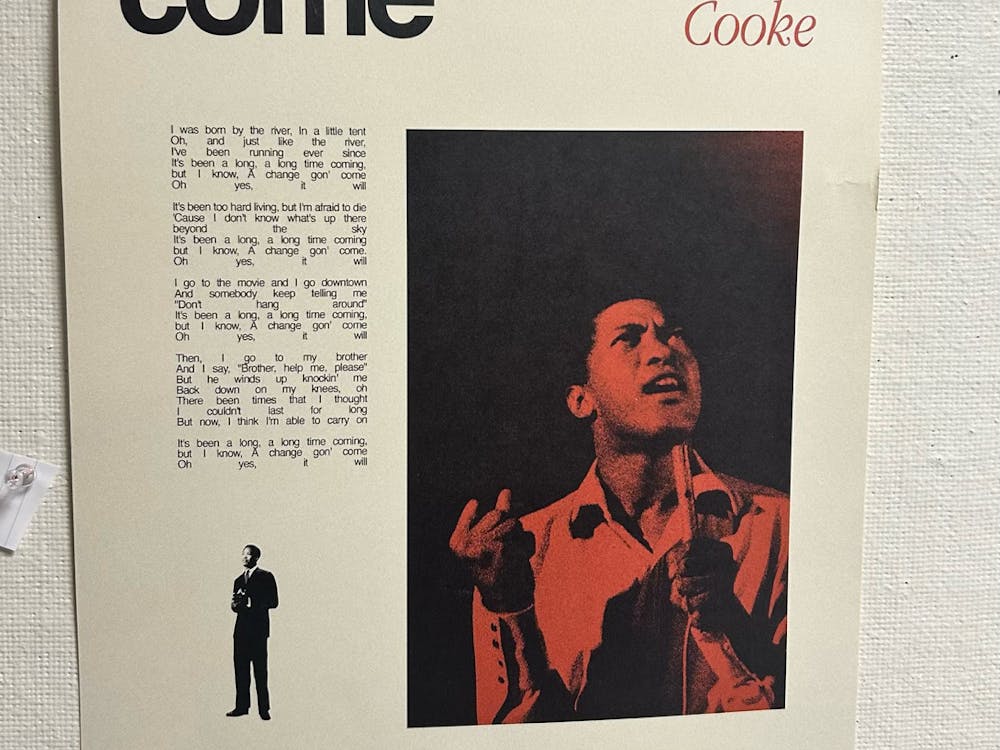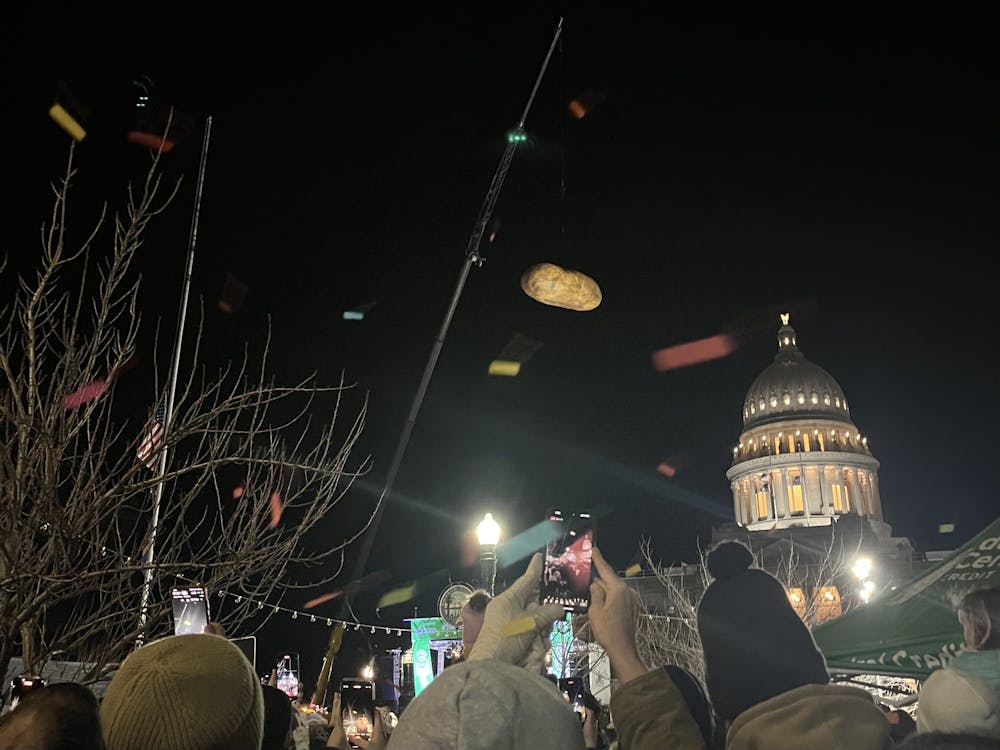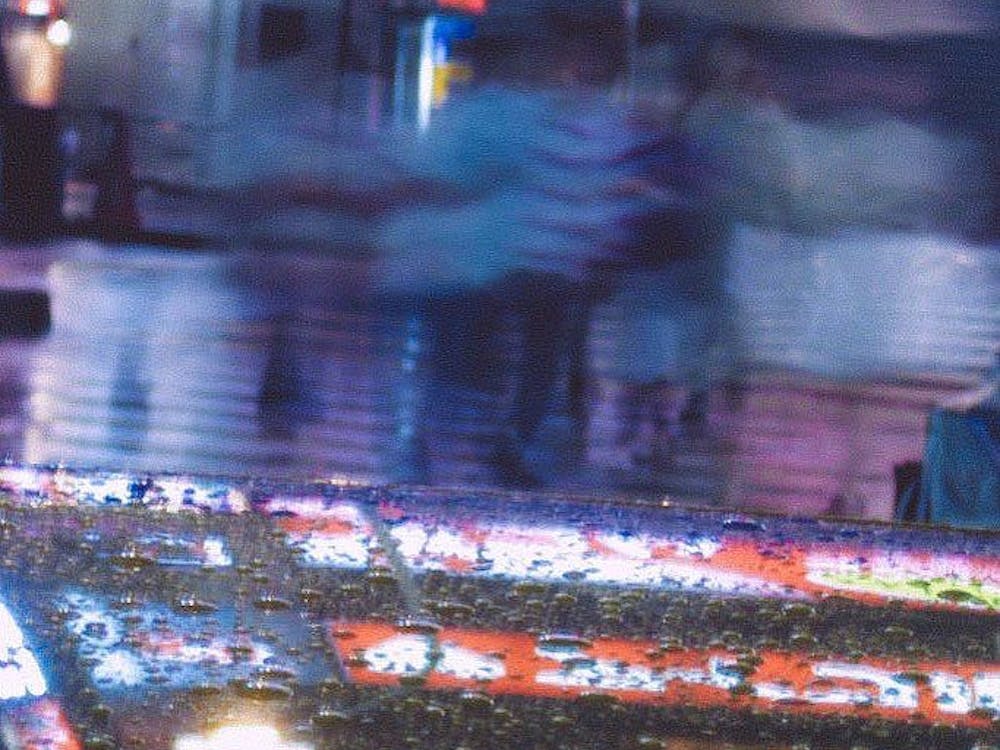The Johns Hopkins Police Department (JHPD) has been at the center of public debate since the University first announced its plans to create a private police force in 2018.
In 2019, protesters chained themselves to stairwells in Garland Hall to protest the planned police force. The sit-in lasted for a month and ended with the arrest of seven people, four of whom were students. Hopkins students also marched with residents of Douglass Homes, a public housing complex near the Hopkins Hospital, and local activist organizations to protest the potential introduction of the JHPD into the community.
In 2020, the marble sign on the Merrick Gateway and parts of the Mattin Center were spray-painted with messages such as “Justice 4 Floyd” and “No JHUPD” following nationwide protests against police brutality. In late June of that year, students and community groups also marched to the home of University President Ronald J. Daniels and taped copies of a petition demanding the cancellation of JHPD to his front door and windows.
Following student and community opposition against the police force, the University announced a two-year pause beginning June 12, 2020. In August 2022, Vice President for Public Safety Branville Bard, Jr. sent an update to the Hopkins community on the development of the JHPD.
The University’s first two town hall meetings, intended to elicit community feedback on the Memorandum of Understanding, were disrupted by protesters and moved to online. During the first meeting, protesters staged a “Die-in,“ where participants imitated lying dead on the floor. The University was forced to move the third meeting fully online.
In emails to The News-Letter, students shared their opinions on how the establishment of the JHPD would contribute to the issue of police brutality in the United States.
Junior D.J. Quezada pointed out that the University’s imposition of the police force would put more officers on the streets of one of the most overpoliced cities in the United States. He maintained that the money invested by the University in the JHPD could be used for constructive and collaborative public safety solutions instead.
“It borders on hubris to claim that ‘this time will be different’ when evidence from other universities and cities around the country shows that campus police engage in the same kinds of violence that are pervasive among their non-niversity peers,” he wrote.
Senior Jayla Scott highlighted that an additional police force in Baltimore would create a hostile environment for residents, especially those in East Baltimore.
She explained how her family’s experiences with incarceration have shaped her perspective.
“I am an abolitionist because I’ve seen my mother, father, and older brother all in jail and I’ve seen how incarceration destroyed their lives,” she wrote. “People are genuinely scared for their lives at the prospect of this police force because of all the potential harm it can cause.”
Scott argued that previous discriminatory practices of the Baltimore police aimed at Black people indicate a higher risk of danger for the Black community, who would be under the jurisdiction of the JHPD in addition to the Baltimore Police Department.
“Baltimoreans will no longer feel safe going to a restaurant knowing that JHPD will be patrolling that area because JHPD is not about public safety.” she wrote. “It is about the safety of specifically Hopkins affiliates, so community members are seen as outsiders and potential criminals.”
She further criticized the University’s commitment to building a novel police force with model police accountability.
“This sounds great, right? But the issue for me is, why do Hopkins affiliates get this super accountable and ‘respectable’ police force when the citizens of Baltimore don’t?” Scott wrote. “It’s just unfair that some people in the city are getting this fancy security and ‘safety’ through Hopkins while others won’t be. Safety shouldn’t be segregated.”
Junior Dominick Solis recalled that the security alert issued on Oct. 27 regarding an armed robbery on San Martin Drive resonated with him because this was the route he often takes to class.
Scott claimed that Hopkins Public Safety has tried to hyperbolize crimes around campus.
“The University has done a good job at fearmongering within the last two years through the public safety announcements. The wording of many emails seeks to make certain crimes seem more serious or dangerous than they actually are,” she wrote.
Solis expressed mixed feelings about the JHPD. He acknowledged that the implementation of the JHPD would make him feel safer around campus. However, he asserted the University also has different motives apart from student safety.
“Hopkins increasingly acts like a real estate developer,“ he wrote. “The JHPD will allow Hopkins to protect their property investments around Homewood and could potentially be seen as a point of conflict with nearby residents who see the JHPD as a move toward gentrification.”
Scott specified that University resources could be used to expand on-campus parking spots for students to reduce the number of car-related crimes around campus. She also noted that crimes such as carjacking and petty robberies happen due to the poverty of the Baltimore community.
Students further reflected on the University’s lack of communication regarding the JHPD and disregard of students’ opinions.
Junior Jake Szeszko noticed that he had heard little news about the JHPD from the University aside from a few emails.
“The University needs to be much more vocal about the implementation of the JHPD otherwise it will look like they are trying to do it sneakily,” he wrote.
Quezada believes that the University has already decided to impose this police force according to its plans and that they designed a communication strategy working backward from that goal, despite opposition.
“The University’s communication regarding JHPD has vacillated between clumsy and outright paternalistic,” he wrote.
Accoring to Scott, collaboration between students, community, staff and faculty has been substantial in working to stop the establishment of the JHPD. Since the 2018 referendum, there have been statements released by student organizations, rallies, teach-ins, disruptions to University events, legislative action, walkouts and many more kinds of activism.
“JHPD was imposed on the Hopkins community. Nobody asked the people on campus what they wanted. JHPD is another experiment on the Baltimore community. The consent of the people who will actually be policed has never been gotten,” she wrote.
The University finalized its Memorandum of Understanding with the Baltimore Police Department on Dec. 2 and plans to deploy JHPD officers on Homewood, Peabody and East Baltimore campuses tentatively in the fall of 2023 and spring of 2024.





